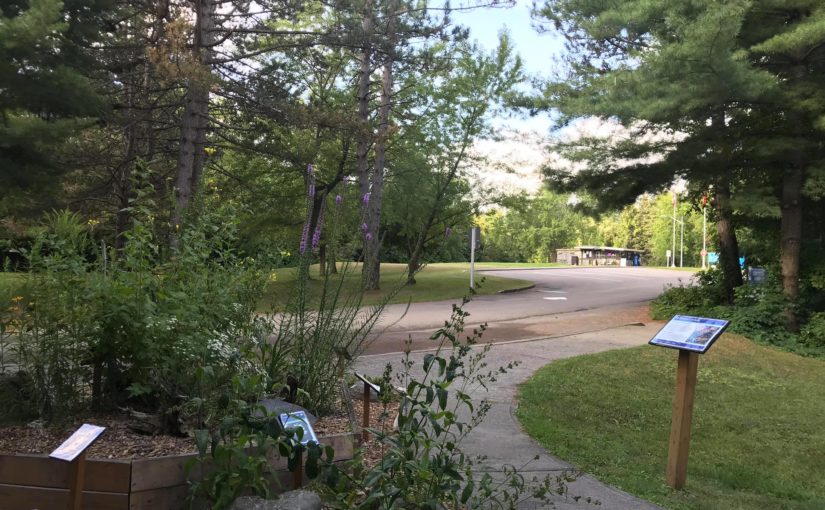Today’s post comes from Alexander Renaud, former Discovery program lead at Emily Provincial Park.
A few summers ago, our Discovery staff at Emily Provincial Park wanted to do something BIG to help the park.
Previous years have seen the instillation of turtle nest protection boxes, the collection of species data through a BioBlitz, and the design and creation of a new trail system.
We decided upon creating a pollinator garden!
Why create a pollinator garden?
For almost a decade, our Discovery and maintenance staff at Emily have been working hard to have a positive ecological impact on the environment.
It all started when staff noticed plants like Dog-strangling Vine, European Buckthorn, and Purple Loosestrife (once removed from the shores) causing havoc in the park once again. Removal of these invasive species is crucial to ensuring native plant species can thrive!
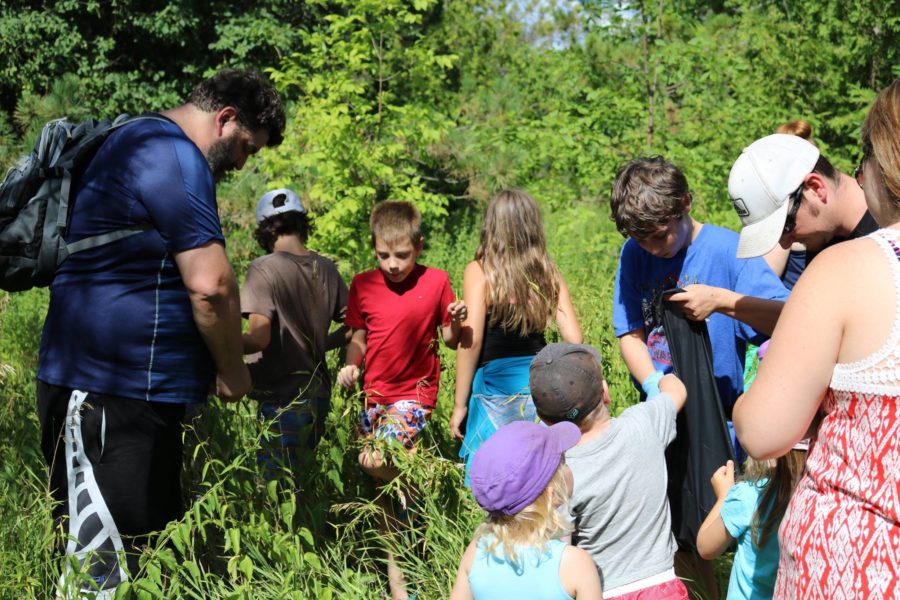
These projects can take years to complete because the plants in question are fairly hardy and resilient.
European Buckthorn in particular has been around in the park for decades and is incredibly difficult to remove. Simply cutting down the plant won’t do. It grows back with a vengeance!

How did these plants get into the park? Well, it is hard to believe by driving through Emily today, but the campground used to be farm fields. The only trees that existed were the cedars that make up what is now Cedar Campground.
While some planting was done in the park, much has returned naturally, including the invaders we talked about before! Seeds arrived from neighbouring properties and from animals passing through.
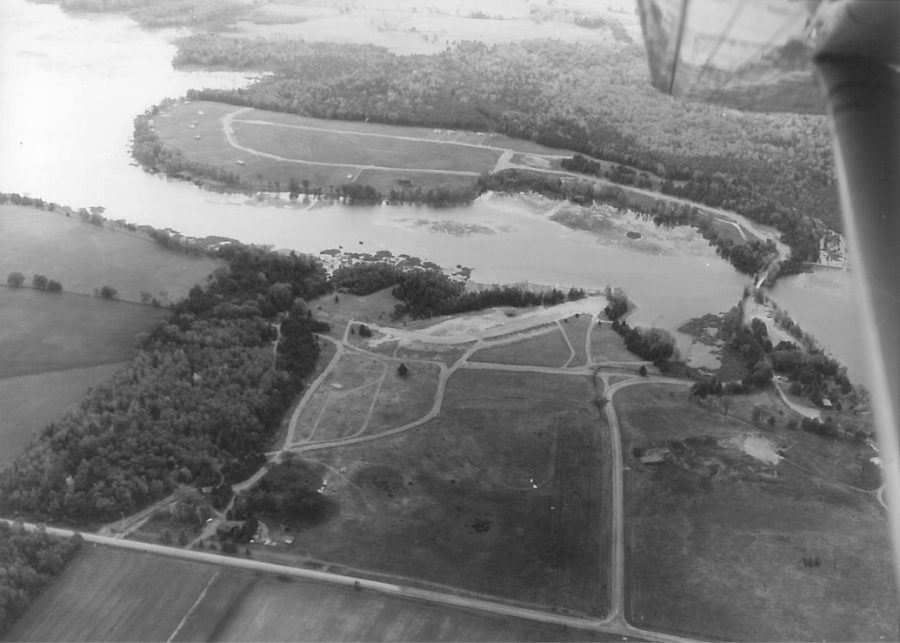
We work diligently to restore balance within the park’s ecosystem, so we wanted to add a few plants back in instead of removing them!
By introducing these species back into the ecosystem we are providing food and habitat for all sorts of critters who rely on them.
What are pollinators?
So why are we doing so much for these pollinators anyways? What’s so special about them?
Did you know that approximately 80-95% of plant species require the help of others to go to seed?

Pollinators, including critters like birds, bees, bats, butterflies, moths, beetles, flies, and other animals, move pollen grains from the anther (male part) of a flower to the stigma (female part).
When this happens, pollination happens!
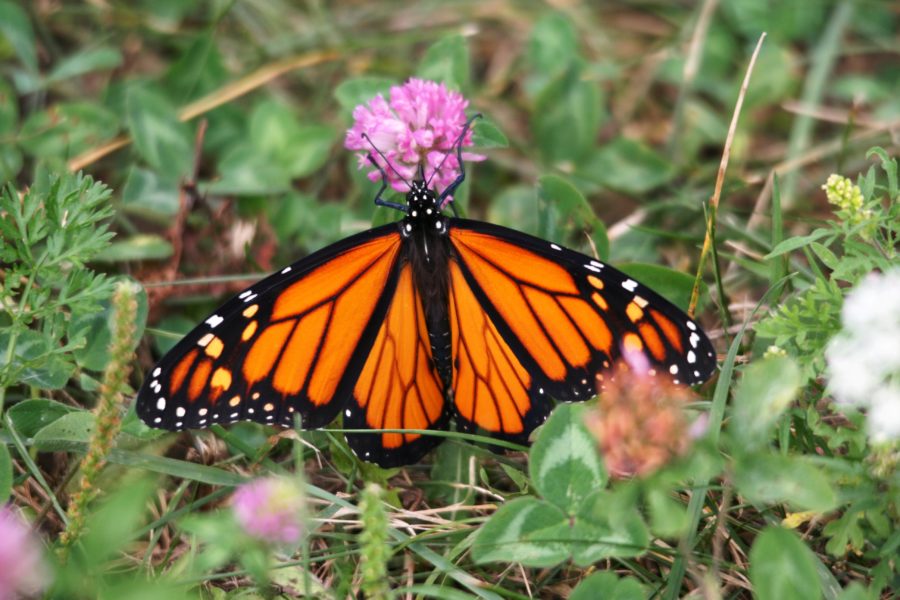
It is simply the first step, but a crucial one, for plants to multiply!
Location, location, location
Before getting too ahead of ourselves we need to find the perfect location.
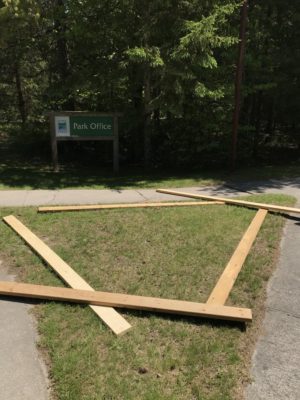
Our Discovery staff get really busy during the year!
It had to be somewhere accessible, where visitors could view it, and large enough to feature several plants but not too big that the project wouldn’t get completed in time.
Most importantly, we wanted to add purpose to a space.
We all agreed that this area of grass within the pathway to the office was perfect! A highly underutilized space that could be given a new purpose.
As we measured things out we saw the possibility to feature nine unique plants in a two leveled garden bed. After that we got the shovels and went to work.

Once we dug out all the sandy soil and placed black landscaping fabric down to reduce the chance of grass reappearing, we filled it in with new soil.
With that done, we were off to the green house to pick our local plants to feature.
Choosing our species
Now you may be asking, how in the world did we narrow down our selection to just nine plants?
Over 750 native species of plants are found within the Kawarthas region, but not all are found at Emily. What we did was consult local experts and analyzed research and surveys completed in the park over the years.
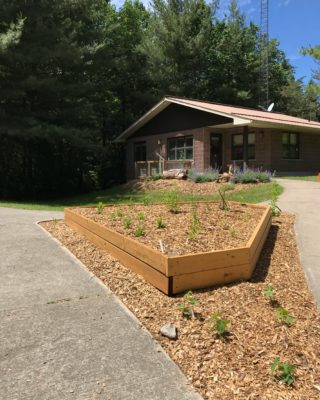
We picked plants that:
- tolerated the sun, the location we choose doesn’t get much shade
- were on species list collected in the past, but recently haven’t been seen in the park
- were found within a larger geographical location
We wanted visitors to feel inspired so we also chose plants that flowered throughout our operating season — May to October — so that their was always something to see when you visited!
The final nine
Here are the plants that now call Emily home:
Prairie Smoke: Full sun. This low-growing, fern-like plant, is one of the earliest blooming plants in spring and continues through summer. The long feather-like seedpods, which look like smoke, are where the plant gets its name.
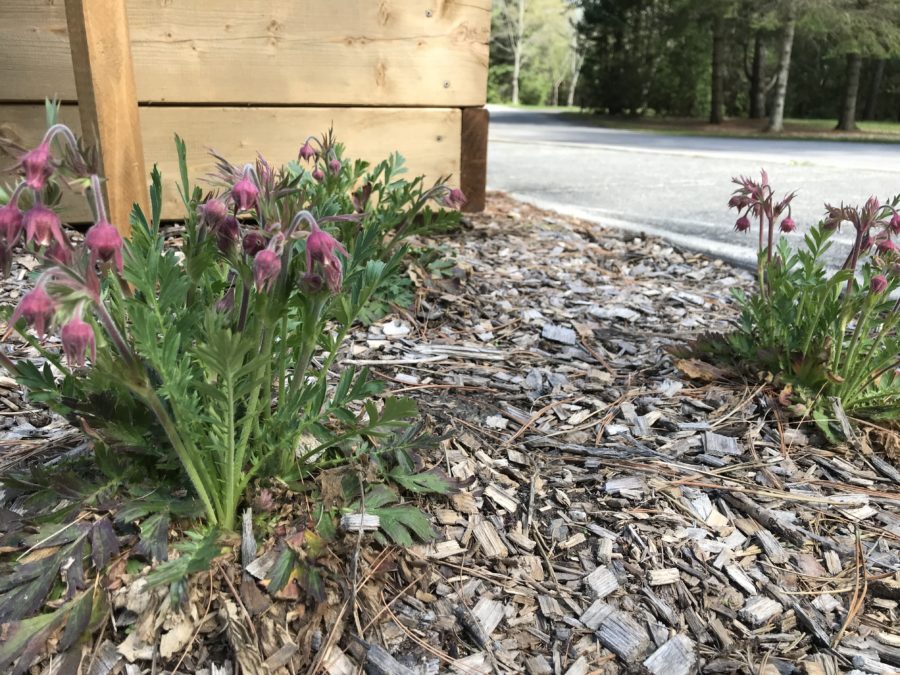
Golden Ragwort: Some shade. These bright yellow flowers certainly stand out! Even though they are part of the aster family, they bloom from May to July, one of the earliest for the species. It stands about two feet tall with heart-shaped leaves.
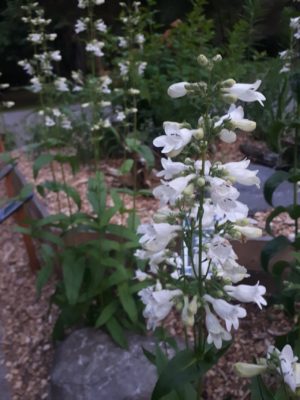
Foxglove Beardtongue: Full sun. This beautiful, tall plant produces deep white flowers in May and June. Due to the shape of the flowers those with long-tongues will only be able to get to the pollen within. Bees and hummingbirds are frequent visitors to this plant.
Butterfly Milkweed: Full sun. This is a bushy perennial with bright orange flowers. The cluster of flowers at the top can be often 2 to 5 inches across and attracts all the butterflies!
Black-eyed Susans: Full sun. The most popular native wildflower grown in Ontario. It is a member of the sunflower family and gets its name from the dark brown/purple centers of the flower head. Make sure to prune or it will spread!
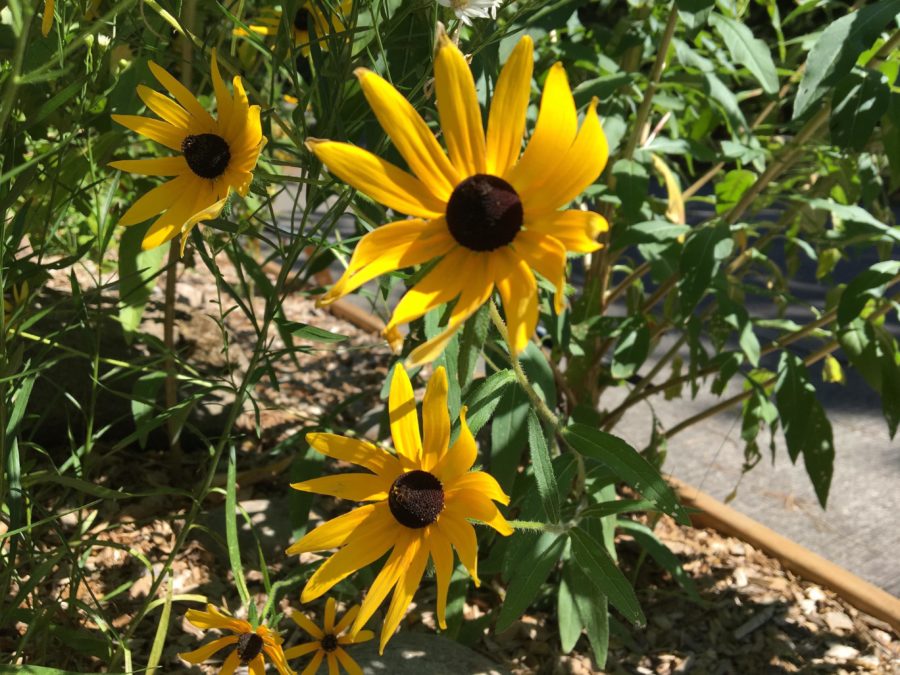
New Jersey Tea: Full sun. A short shrub that grows only 3 feet. Perfect to anchor the corners of our garden, and produces a beautiful cluster of white flowers. Drought resistant which is a plus!

Wild Geranium: Full shade. This is a gorgeous five petal perennial. Blooming in late spring to early summer, it is a wonderful addition to any garden. The plant’s flower will eventually give way to a seed pod that looks like a bird’s bill, and will dry and split away from the plant.
Ninebark: Some shade. We choose this larger shrub to be the centrepiece of the garden. It flowers late spring with clusters of white and pink flowers. In the fall it produces red fruit that acts as food for our feathered friends. It will grow to be large (5 to 10 feet), and will provide a little shade for all the plants around it.
Dense Blazing Star: Full sun. This plant is listed as a “threatened” species in Ontario. Urban development and competition with the invasive European Common Reed and Purple Loosestrife are hurting existing populations.
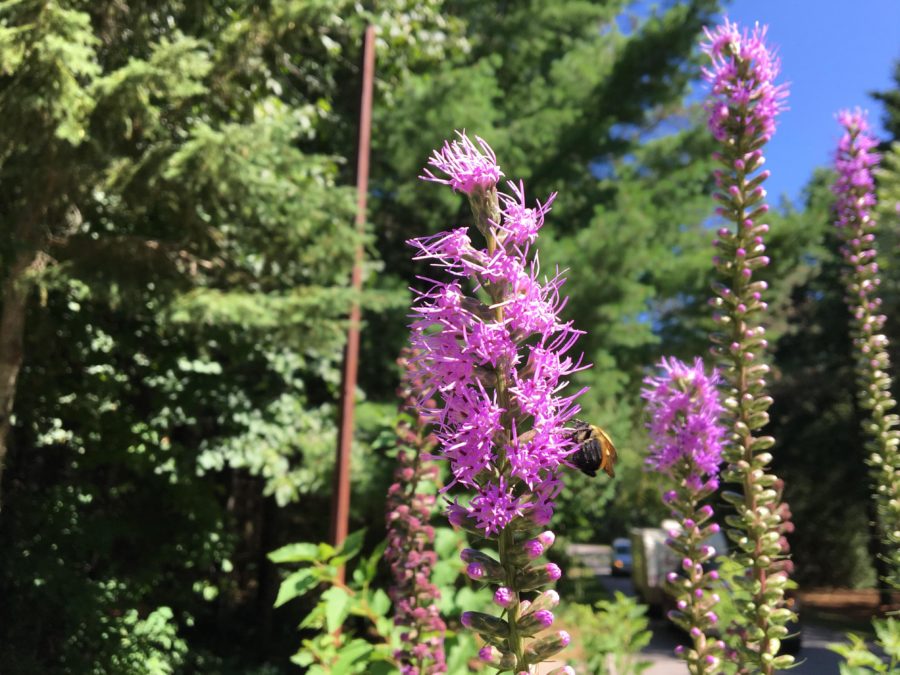
What you can do to help
Plant a small garden of your own! You will be amazed by what a few plants can do to help the ecosystem around you. Many of these little critters have a long road ahead of them and would appreciate the snack your flowers would provide.
Let the grass grow just a little more and leave the “weeds” alone. Many native plants were considered pest to those who settled in North America and have gotten a bad rep. Dandelions for example are one of the first plants to bloom in the spring and are crucial sources of nutrients for early woken insects after the thaw.
Spread the word. Not all of us have large wide open spaces we can convert into pollinator gardens. And that’s okay! Just by helping to spread the message about what good can be done you are already doing your part.
Next time you visit Emily Provincial Park be sure to stop by the park office to find inspiration for your own pollinator garden or to see who is visiting the flowers today!
